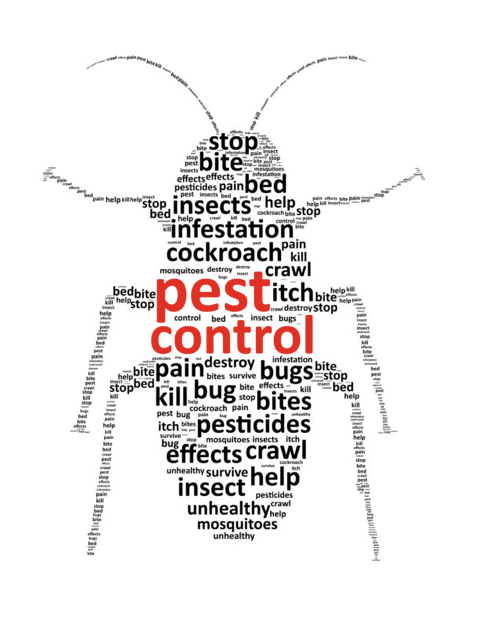The smart Trick of Eco Bed Bug Exterminators Dc That Nobody is Talking About
Table of ContentsMore About Eco Bed Bug Exterminators DcThe Definitive Guide to Eco Bed Bug Exterminators DcWhat Does Eco Bed Bug Exterminators Dc Mean?Eco Bed Bug Exterminators Dc - TruthsRumored Buzz on Eco Bed Bug Exterminators Dc
Due to the fact that pesticides are hazardous, they are also potentially unsafe to humans, pets, other organisms, and the atmosphere. People that utilize pesticides or consistently come in call with them have to recognize the loved one poisoning, prospective health and wellness impacts, and preventative procedures to decrease direct exposure to the products they use. Hazard, or threat, of utilizing pesticides is the potential for injury, or the level of danger involved in using a pesticide under a given set of problems.
Applicators can reduce or nearly remove direct exposure-- and hence reduce risk-- by following the tag guidelines, making use of personal protective apparel and devices (PPE), and dealing with the pesticide effectively. For example, greater than 95 percent of all chemical exposures come from facial exposure, largely to the hands and lower arms. By using a set of unlined, chemical-resistant gloves, this sort of direct exposure can be virtually eliminated.
The unsafe results that take place from a single exposure by any path of entry are termed "severe results." The four routes of direct exposure are dermal (skin), inhalation (lungs), dental (mouth), and the eyes. Intense toxicity is identified by checking out the dermal poisoning, inhalation toxicity, and oral toxicity of guinea pig.
What Does Eco Bed Bug Exterminators Dc Do?
Acute toxicity is determined as the quantity or focus of a toxicant-- the a.i.-- called for to eliminate half of the animals in a test population. This step is normally shared as the LD50 (dangerous dosage 50) or the LC50 (lethal focus 50). Furthermore, the LD50 and LC50 worths are based on a single dosage and are videotaped in milligrams of chemical per kg of body weight (mg/kg) of the guinea pig or in components per million (ppm).
The lower the LD50 or LC50 value of a chemical item, the better its toxicity to humans and animals. Chemicals with a high LD50 are the least harmful to humans if used according to the instructions on the item label. The chronic poisoning of a pesticide is established by subjecting guinea pig to long-lasting direct exposure to the active component.
The persistent toxicity of a chemical is more difficult than acute poisoning to establish via laboratory analysis. Products are categorized on the basis of their family member intense poisoning (their LD50 or LC50 worths). Pesticides that are categorized as highly harmful (Poisoning Group I) on the basis of either dental, facial, or breathing toxicity need to have the signal words DANGER and POISON published in red with a head and crossbones sign prominently showed on the front panel of the bundle label.
The intense (single dosage) oral LD50 for pesticide items in this team ranges from a trace total up to 50 mg/kg. For example, direct exposure of a couple of decreases of a material taken by mouth might be deadly to a 150-pound person. Some chemical items have just the signal word threat, which tells you absolutely nothing about the intense toxicity, just that the item can create serious eye damage or severe skin irritability
Eco Bed Bug Exterminators Dc Things To Know Before You Buy
In this group, the severe dental LD50 arrays from 50 to 500 mg/kg. A teaspoon to an ounce of this product might be deadly to a 150-pound individual (exterminator DC). Pesticide items identified as either somewhat toxic or fairly safe (Toxicity Classifications III and IV) are called for to have the signal word CAUTION on the pesticide label

All pesticide toxicity chemicalPoisoning worths the LD50, can be found on discovered product's Material Safety Product Security (MSDS). Chemical labels and MSDS can be obtained from merchants or produces - https://www.find-us-here.com/businesses/Eco-Bed-Bug-Exterminators-DC-Brush-Prairie-Washington-USA/34021983/. The signs and symptoms of chemical poisoning can vary from a moderate skin irritability to coma or also fatality.
People additionally differ in their level of sensitivity to various degrees of these chemicals. Some people might reveal no response to an exposure that may create extreme disease in others (bed bug heater rentals). Due to prospective health issues, chemical customers and trainers should identify the common symptoms and signs of pesticide poisoning. The effects, or symptoms, of pesticide poisoning can be broadly specified as either topical or systemic.
Things about Eco Bed Bug Exterminators Dc
Dermatitis, or inflammation of the skin, is accepted as the most frequently reported topical result associated with chemical direct exposure. Some people tend to cough, wheeze, or sneeze when exposed to pesticide sprays.
This signs and symptom generally subsides within a couple of mins after a person is eliminated from the exposure to the toxic irritant. A response to a chemical item that triggers someone not just to sneeze and cough however likewise to develop extreme acute respiratory signs and symptoms is a lot more likely to be a real hypersensitivity or sensitive reaction.
Systemic impacts are rather different from topical effects. They often happen away from the initial factor of get in touch browse around here with as an outcome of the chemical being soaked up right into and dispersed throughout the body. Systemic impacts commonly include nausea, throwing up, tiredness, headache, and digestive tract conditions. In sophisticated poisoning cases, the person might experience adjustments in heart rate, trouble breathing, convulsions, and coma, which might lead to fatality.